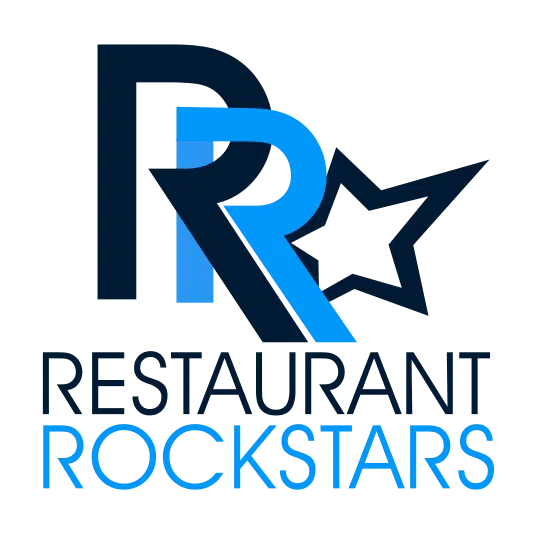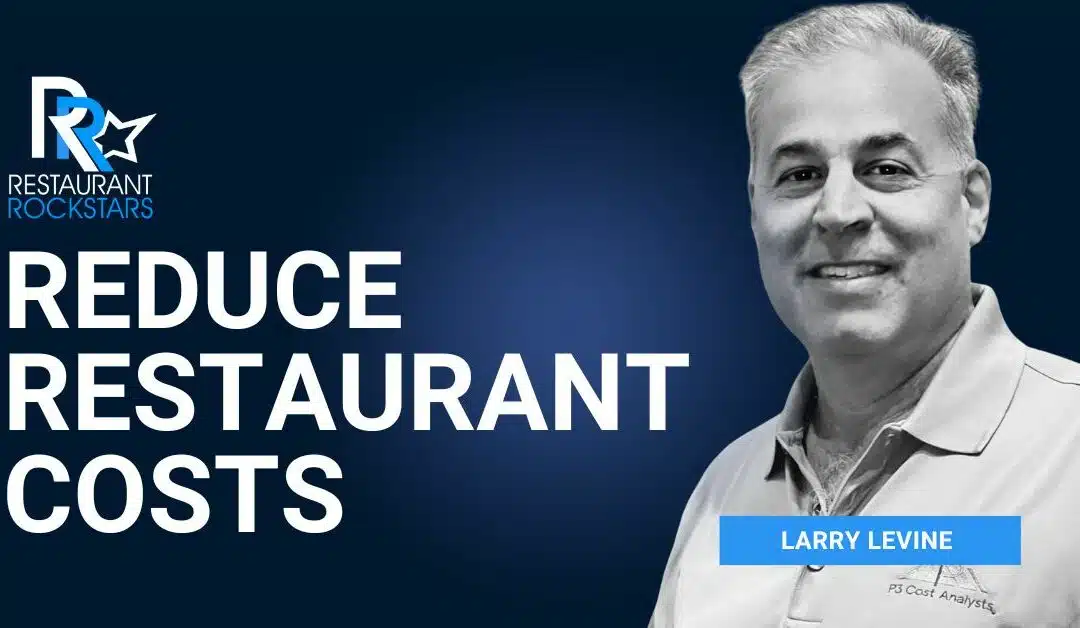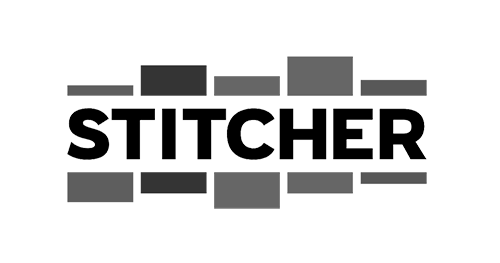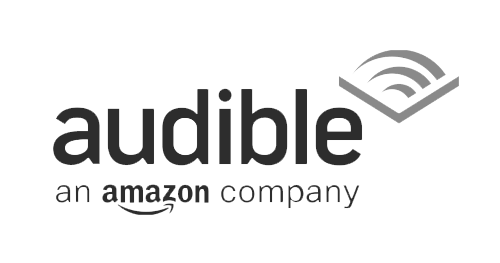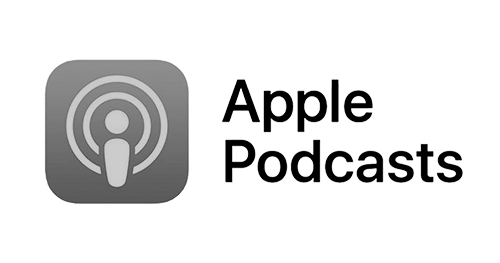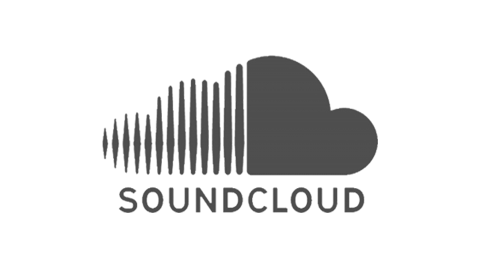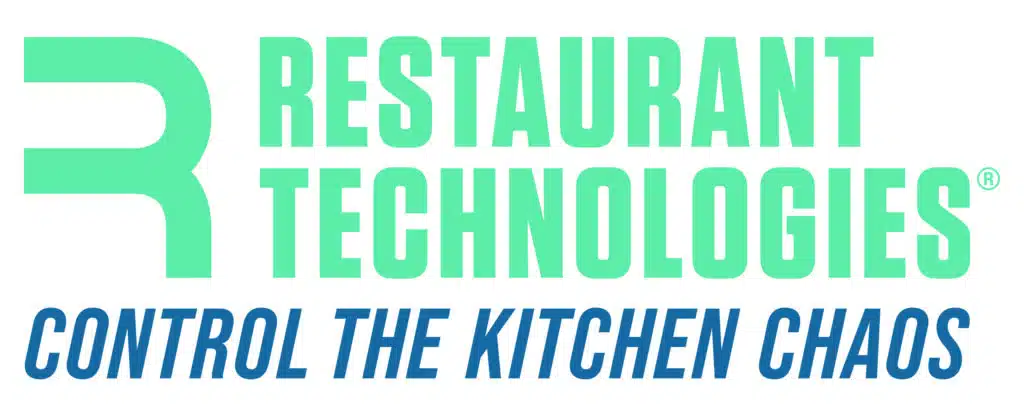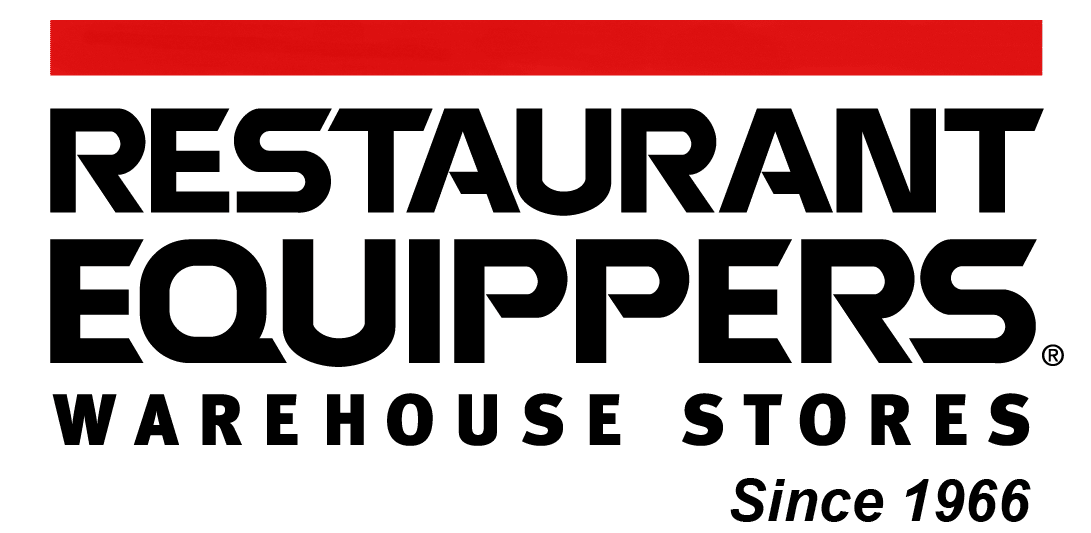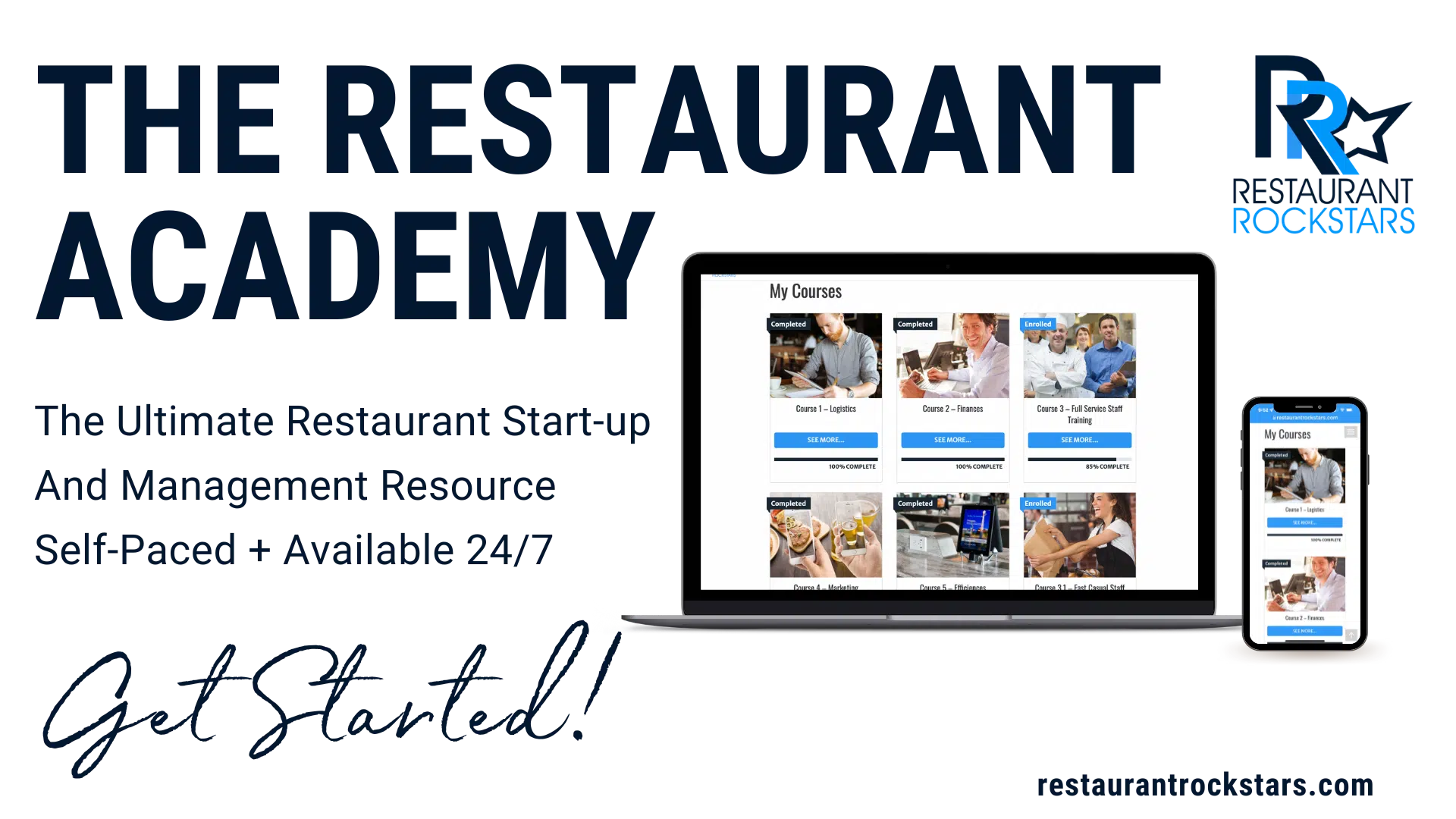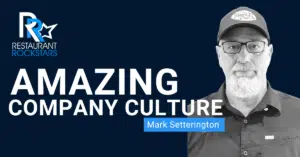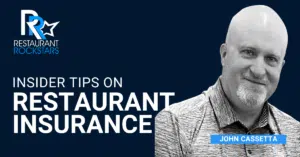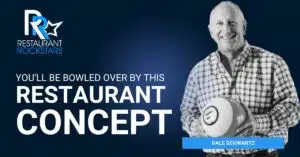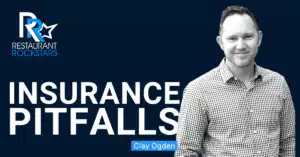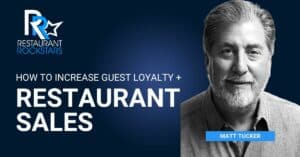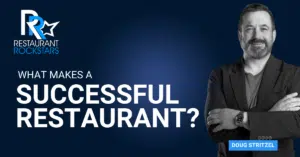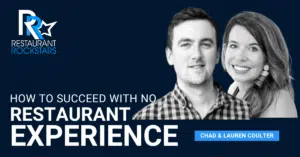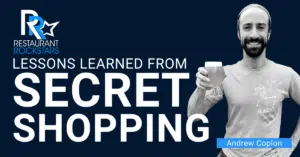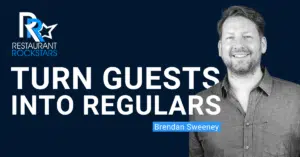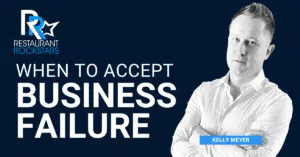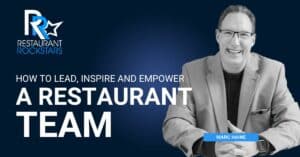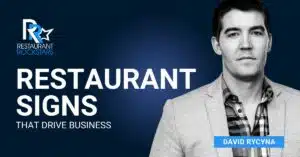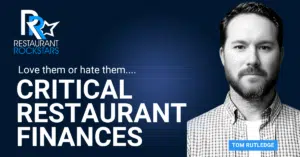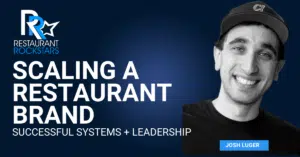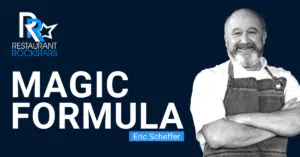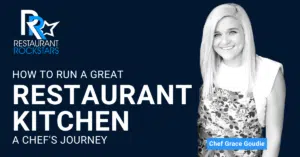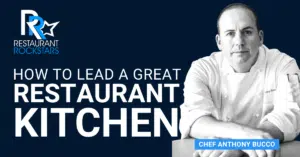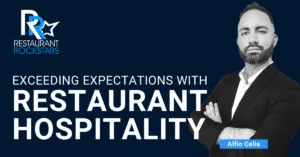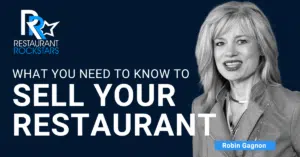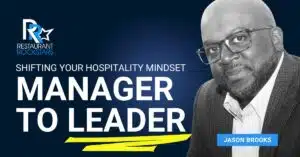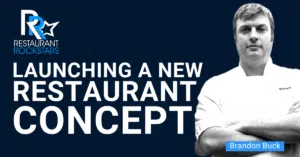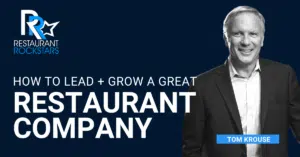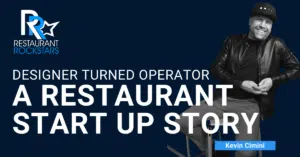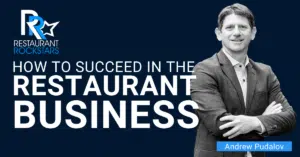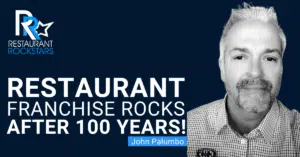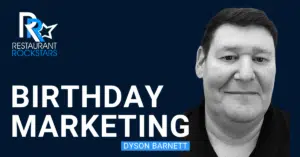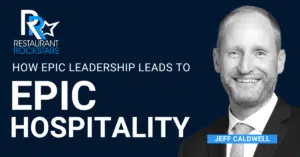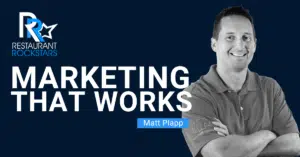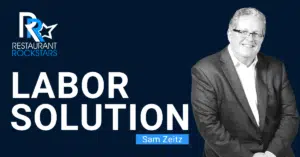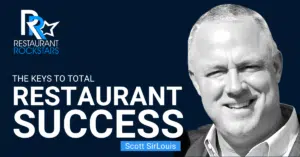Restaurant Rockstars Episode 392
How to Save 30-40% on Your Restaurant Costs
LISTEN HERE OR ON YOUR FAVORITE PODCAST PLAYER
Restaurant Costs keep rising and margins keep shrinking, what can you do?
Take charge of your restaurant expenses! Like I always say, “If the money’s not in your pocket, it’s in theirs”!
In this episode of the Restaurant Rockstars Podcast, I speak with Larry Levine of P3 Cost Analysts. Larry’s an expert at reducing your non-payroll restaurant costs.
Listen as Larry explains many ways to reduce restaurant costs including:
- Exactly how he works with clients to reduce restaurant costs
- Which restaurant costs save your business the most money
- Why you can’t DIY this process to find these savings
- Once found, what your restaurant can do to maintain these savings.
- Efficient ways to monitor future invoices to keep vendors honest.
- How to access a Free expense audit
Take a listen to this episode and find out why “Shark Tank” Shark Kevin Harrington endorses Cost Analysts!
Now that we’ve got your attention about boosting profit, I want to be sure you have checkout out new course!
The Restaurant Profit Maximizer is only $7 and will teach you proven ways to increase profit in your restaurant. Check it out here https://restaurantrockstars.com/profitmaximizer
Now go Rock YOUR Profits + YOUR Restaurant!
Roger
Connect with our guest:
https://www.linkedin.com/in/larrymlevine/
https://www.costanalysts.com/p3-franchisees/larry-levine/
https://www.youtube.com/watch?v=dmsRrBdn2SM
Thanks for joining me on the podcast. Welcome back. Those who listen regularly know that when I owned and ran restaurants, I was obsessed with controlling costs and maximizing profit, and you should be too. I have a mantra to this day. If the money’s not in your pocket, it’s in their pocket. So today’s guest, Mr. Larry Levine comes from Cost Analysts and they are experts at reducing a restaurant’s indirect non payroll expenses. I’m talking about telecommunications, utilities, waste services, uniforms, linens, and if you own your property, even your property tax. Listen on, because you could save 30-40 percent on these costs. Also, check out restaurantrockstars.com/profitmaximizer. I created a profit maximizing course that will teach you the biggest restaurant profit needle movers that you can immediately action in your restaurant. What an eye opener. And the best part is, it’s only $7. Again, I’ve said this before, less than the cost of a fancy coffee or craft beer.
Check this out because you can maximize your restaurant profits. Again, restaurantrockstars.com/profitmaximizer. Now, on with the episode.
You’re tuned in to the Restaurant Rockstars Podcast. Powerful ideas to rock your restaurant. Here’s your host, Roger Beaudoin.
Every restaurant needs signage that attracts attention and brings in the customers. Cirrus LED signs bring your business to life and increase customer traffic and sales. Cirrus high resolution LED technology is energy efficient and ensures maximum visibility for your operation. Cirrus signs are versatile and allow easy changing of content and displays.
Cirrus, you can subscribe to pay with low monthly payments and no upfront costs. And now my listeners get the first two months free. Go to try dot cirrus LE d.com/rockstar. That’s try dot C-I-R-R-U-S-L-E-D.com/rockstar.
Listen, you need three things, knowing your critical numbers, sales training, and driving new and repeat business. You can now teach your staff 24/7 to run your business and boost sales and profits as if they owned it with our online Restaurant Academy. Right now, the Restaurant Academy is only $59 a month that includes access for you and up to 25 members of your team.
And for a limited time, our new Academy members can get 15 percent off every month using the code podcast15 at checkout. Go to restaurantrockstars.com/joinacademy. Again, that code is podcast15.
Welcome back to the Restaurant Rockstars podcast. Larry, welcome to the show. Thank you so much for being here.
Thanks for having me, Roger. Appreciate it.
This show is all about providing information and solutions to our restaurant and hospitality audience to help them make informed decisions and to run more profitable, more efficient businesses.
So you as a guest is highly relevant, and I know we’re going to get the guest’s attention because this is all about how operators can save significant amounts of money on their expenses. You’re an expert at this. I’m really glad you’re here. That’s what the show’s about. So I hope I’ve got my audience’s attention.
I’m sure I do. But thanks, Larry. So this is a franchise model and you are a franchisee based on extensive experience you’ve had in other franchises, but now you are a franchisee for this company, P three cost Analyst, and you are. Literally saving companies money anywhere from 20 to 40 percent, and that clearly varies.
But let’s talk about let’s talk about what types of clients you serve, first of all, and then we’ll get more in depth.
Sure. Thanks. Thanks for asking. So we, as you said, we help businesses reduce their non payroll expenses, their indirect spend. We can’t help with their materials. We can’t help with their food, but we can help them with with their telephone, their telecom, their utilities.
Waste, uniforms, linens, shipping merchant processing, managed print, at least copiers and printers across a range of industries, order groups, hotels, senior living, manufacturers, and of course restaurant groups. Not so much for the small groups, there are There’s not a lot to be saved if you’re only spending $1, 000 a month on waste.
But if you have 50 locations, you’re spending $1, 500, $2, 000 a month per location, upwards of $100, 000 per month. In a lot of large numbers, even a small savings can present, can come back with a large amount of savings
. That’s amazing.
When I ran restaurants, that was one of the things that I was hyper focused on.
And, cost controls and maximizing profit, but there are certain expenses that are really beyond our control. Inflation has had an impact on that. And the average restaurant owner why can’t we do this ourselves? Like, why can’t we just say, oh, this is important. I’m going to spend a week or two really going after my suppliers.
What are the pitfalls there and why? Why should we work with you?
So it’s great that you as an operator are concerned about that, and many operators are concerned if they have the time to do this, but do they have the skills? Do they have the do they know what their competition is paying?
What the business down the street is paying? What the other vendors are offering for rates? You might negotiate, you might be, the vendor may come in and offer a thousand dollars a month for waste, you may be happy with that, you may want to bring it down, you may try to negotiate it down, and come back with a number that’s say 10 percent lower and be happy with it, but perhaps the vendor can offer you as much as 40 percent lower, but you don’t know what their cost is.
How would you know what their cost is? Have you had the time? You’re a restaurant operator. You’re focusing on your food, your culture, your brand. You hire, when you have legal expenses, when you have social media expenses, when you want to file your taxes, you hire an attorney, you hire a social media expert, you hire an accountant.
Same should be true for cost management as well. Hire an expert that knows what your competition is paying, knows what the other vendors are offering, knows what the vendor’s costs are. They know that. P3 Cost Analyst knows that because we have 30 years of experience. We’ve audited 30, 000, over 30, 000 client locations.
We’ve built a database of all these costs. So when we look at your costs, when we examine your invoices and your contracts, we benchmark it against our database to see where you are and how far down, how far we can bring those rates down because our auditors are industry insiders, not only do they have access to our database, they know how to negotiate with their vendors, with your vendors.
They know what to ask first. They know how to be patient with the vendors. They know the language. They understand billing codes. Just because you have a bill or an invoice from your Vendor, a telecom vendor perhaps, doesn’t necessarily mean you have all the information about your bill. You don’t have necessarily access to wholesale rates.
Why can’t we do this ourselves if we suddenly listen to this podcast and we get the idea, hey, I should really spend some time and focus on cutting my costs or at least, trying to investigate the costs from my vendors?
Is it possible to do this ourselves? I can’t imagine why when some company has 30 years of experience in doing this, but tell us your, your take on that. It’s great that you want to do it yourselves, but I would ask if you have the ability to do it yourselves, as you’re asking right now.
You might be interested in bringing your waste vendors rates down from the 1, 000 a month that you’ve been offered, and be quite content and quite happy that you’re able to get 10 percent off that bill. And the vendor is more than happy that you got only 10 percent off that bill, because they may have the ability to bring it down 30 or 40 percent more.
Do you know what their costs are? Do you know what your competition is paying? Do you know what the ven the an alternate vendor is offering for the same service? A consultant such as P3 Cost Analyst does. We have 30 years of experience, we work with 30, 000 plus client locations, our auditors are industry insiders, they’ve worked at these vendors, they’ve built the database, they can take your invoice, they can take your contracts and benchmark it across against our our rates database.
And to see where you are, and come up with target costs, target new rates, and work with your vendors on your behalf to bring your rates down. Sometimes it takes months to get there, because they know what we’re trying to do, but if you work with us, and, Go through the process that may take, as I said, three, three months.
We’re gonna bring you down as much as 30 to 40 percent, in some cases 50 percent. Everyone is different. You may, we can make, we may come out of this process and discover that you have the best rates possible and not charge you anything. There’s no fee if there’s no findings. But oftentimes we find that the, on average we can bring your rates down by 30 to 40 percent.
In the case of telecom, for example, 25 percent of the time there are refunds due because there are contractual violations. In the case of utilities, 30 percent of the time there are refunds as well. So while you could try it, you rarely will you be as successful as a consultant doing this with the experience.
Your time is better spent, in my opinion, building your brand, enhancing the experience. Working working to reduce costs and enhance the quality of your your clients your guests experiences. Just as you would hire a lawyer for your legal issues, or a social media manager for your social media, or an accountant for your taxes.
I would recommend you hire a cost managed consultant to manage your indirect spend. Makes perfect sense. Let the experts handle it because again, 30 years of experience, leverage inside information on what these things, what the rates are and what these profit margins are that these companies are making.
I guess that begs the question, are there Cases where you have leverage, like what’s the leverage against a utility company or a trash vendor? Are you going to say, Oh, my client is going to jump ship and go to XYZ because they’re getting a, they will get a better deal here than with you. It’s what’s the impetus for that vendor to play ball with you?
The primary impetus is that the vendor would like to continue with our client. They, the vendor, if we don’t state it explicitly, the vendor understands that they have competition. I’m not going to state any vendor names here, but in any particular, in almost all categories except in regulated markets or if it’s like in telecom, where there is like only one vendor that’s able to provide this the landline service for you, the vendors understand that.
Oftentimes the client is willing. And able to make a change to another vendor. So while we don’t have to, while we don’t like to do that that is hanging over their heads, but they’d like to, they understand what our skills are. They understand they would like to keep their client. And we’re just going to wait it out with them.
We’re going to negotiate with them. I’m going to take the time. Wait it out with them and, on the first offer may come back as 10 percent reduction in price, but we have a database. We know that this particular vendor in this particular geography for this kind of service has previously given it to somebody else in the geography for 30 40 percent less or in another geography.
So we know when to push them, we know how much to push them, and they would like to keep their client. Oftentimes, many of our clients say I’m in the middle of a contract, I can’t really do this. But most vendors are willing to negotiate in the middle of a contract to reduce the rates now, then wait it out to the end of the contract, and lose that vendor, lose their client to another vendor.
Whether that be utilities in a supply market, or waste of uniforms and linens.
That’s a powerful argument, because a lot of operators, would think, hey, I signed a contract. I’m locked into this contract. But again, I learned a long time ago, you don’t ask, you don’t get, and you got nothing to lose by working with you and trying to renegotiate these contracts.
And I think the most compelling statistic your website is claiming a 90 percent success rate not in terms of, how successful they are, but in terms of 90 percent of the businesses are getting savings, and there’s only 10 percent out there that you really can’t help. So the odds are overwhelmingly in the business’s favor, the restaurant operator’s favor, that if they, if they get an audit with you, chances are they’re going to save and save some pretty good money and they don’t have the time to do it.
You’ve got the expertise. So that’s what I’m hearing. I think that’s tremendous. Is it?
Yeah. Let me enhance that a little bit. So yeah, please do. This is 90% of our clients, yeah. Realize that 30 to 40% savings on average. If they’re, as I said before, if there’s no savings, there’s no fee. Sometimes the savings is only 5%, three to 5%.
Sometimes the savings is 90%. , I had one client with, we were able to save them 76 percent on their waste expenses. He had told me early on in the process when, at that point, when we came back with our initial findings before we implemented, he said, I don’t look at the invoices.
I just pay them. The reality is he’s of the business size where he’s responsible. He just doesn’t have the time. The smaller businesses typically don’t have a procurement staff. They have a guy or gal responsible for finances and all the AP. All the material supply, all the payroll, they just don’t have the time.
An invoice comes in and they pay it. Can we save them money on the smaller businesses, on the really small businesses? Possibly, probably not. Maybe utilities, if they’re in a deregulated utility market, we can go down that rabbit hole and explain what that means. But they’re probably not saving a lot of money.
They’re not, probably not spending a lot of money if they’re a single location, pizza shop, sub shop, sandwich shop. That’s only spending a few hundred dollars per month on each of these categories. On the larger businesses, hundreds of locations, they have a procure, they likely have procurement staff with account managers, with category managers responsible for waste, responsible for utilities, responsible for uniforms and linens.
And they’re doing an okay job, but they too don’t have The access they don’t have they probably haven’t created their own benchmark database. They’re probably not in industry insiders there are challenges sometimes to convert into a client because of their mindset that they think they’re doing a great job.
The guys in the middle, 20, 30 location restaurants, the five location restaurants they have the spend levels, there’s opportunity to save, but they probably don’t have deep procurement staff, and we could partner with their procurement teams, their finance teams, let, have them focus on, Perhaps vendor selection, but also, direct supply, direct expenses.
Food, and brand, and staff, and have us focus on the indirect spend for them. Again, say perhaps saving them 30 to 40 percent. And the primary category is, I don’t think we’ve discussed this yet, for a restaurant group, telecom. If they have one location, there’s nothing to save.
If they have 50 locations, they have a lot of telephones. They probably have regional managers on cell phones. There’s telecom, whether it be wireline, wireless, or internet and, perhaps TV, depending on the market. Three to five percent savings. Yes, again, it’s a small percent of possibly a large number that becomes a possibly large number.
As you said, perhaps there’s some leverage hanging over their head, over their heads, that we will change vendors if they’re not willing to negotiate. More often than not, they will negotiate.
You’re choking on invoices and don’t have the time to even do your own self audits. In the case of the other categories, they’re monthly, but you have other responsibilities. So those four are the four primary categories. Telecom, utilities, waste, uniforms, and linens.
We recently saved another business type. Yeah. Over $500,000 cumulative cumulative savings across five years on a lease copier business.
Most of these, I would assume, as a former operator myself, we literally used all these vendors in every category you mentioned.
We had property tax because we owned our own property. We certainly had the linens. We had the utilities and the internet. We had the trash services. I had several restaurants all at one time. And you notice that these costs creep up. Like I looked at. Invoices, religiously, because not every operator does, but like I said, I was obsessed with this and I constantly saw increases here and there, and you never know whether that’s related to their costs going up or it’s just time to pass a, another increase on to the customer.
Do you notice that any of these vendors in any of these categories tend to overcharge restaurants or businesses more than others, or do they all do it?\
They all do it. Less so with telecom utilities. There’s not a lot of opportunity to tweak your services, but in the state, for waste example you may get a COVID surcharge, a fuel surcharge, an incorrect or invalid fee for environmental overhead fees,
and you think, that happened, that’s fair, they, I guess they’re going to charge me, and do I have the time to look into this extra 50 to 100? Is it worth my time? Yeah. It may it may or may not be worth the time. Is it contract compliant? We’re going to have your contract in front of us. We’re going to actually, if we move forward, perhaps negotiate a better contract so that there’s more restrictions on it so this stuff can’t happen.
In the case of uniforms and linens, you may very well, one of your operators, one of your managers, may very well ask the the driver that comes in for an extra rag, an extra set of rags, an extra mat, and there are maybe three, four, five ways to charge these things, and they’re not going to charge you the cheapest way possible.
And it’s a legitimate need. But they’re going to charge you the most expensive way possible. And we’re going to come in there, we’re going to see the next invoice. We’re going to bring it back down to the right rate. The problem oftentimes is that these errors seem to creep back in. I would never say these errors are intentionally brought back in, but some of these vendors have a problem.
Nailing down the correct rates, nailing down the correct quantities, and we need to stand on them aggressively to keep them intact. And this may be actually a good segue, so when there are findings, as I said, when there are no findings, there’s no fee. If we come in and find, your telecom is up to par, your utility is up to par, and we put in hours for this, that’s on us.
Yeah, but we come in and find your waste. We save you 30. Round numbers for the sake of argument You were spending a hundred thousand dollars a year on a category and now we bring it down to sixty thousand dollars a year So saved you forty thousand dollars We’re going to finance our fee because we’ve realized the savings.
We’re going to move forward with an implementation and finance our fee out of that 40, 000 savings. And this is our model. Other vendors have similar models. We’re going to ask to share on a 50 50 basis on that other 40, 000 on a monthly basis, whatever 20, 000 is divided by 12. monthly for up to five years.
So we have a five year model, we have a three year model, we have a one year model. In the case, as I was saying before, that these errors tend to creep back in, it’s tough to nail them down. Waste and utilities and linens being two of the most two categories that are most likely to have this problem, where you find the most money as well.
We would recommend you choose the five year option with us because we’re going to do some ongoing monitoring. For five, for 60 months, not only will we bill you for what we did, of course, but we’re going to provide you additional ongoing services. We’re going to look at your invoices every month to see if, in fact, the rates crept back up, to see if that rag or that mat was billed at the proper rate, to see if there may be additional savings opportunities we didn’t realize in the initial in the initial If you find, however, in the case of utilities or telecom, regardless of how much we saved you, that there really tends not to be errors creeping back in at a stable invoices, at a stable rate.
We might recommend, and ultimately it’s your choice, only a 36 month option without the monitoring, because you don’t need the monitoring, because it’s stable, telecom is not going to be part of this problem.
Do you really want to pay us 500, half of that, for 36 or 60 months? You can, we’d be, we’d gladly have you as a client for that amount of time on that category, but would you rather pay us $1,000 times 12, $12,000 once and get it off your books? So on a category by category basis, you get to choose whether you want one year at 100%, three years at 50 percent with no ongoing monitoring, or six years At 50 percent with ongoing monitoring and we can get you, we can move you around a little bit as well if you decide that you want to go with the three year model and decide three, four months later that I really can’t handle it.
There are errors in this. I don’t have the time. I need to focus on my staff, on my restaurant, on my culture. I’m building a new site. I need you to do this ongoing monitoring for us. We’ll upgrade you to the five year model. Let’s walk us through the process. I’m a restaurant owner listening to this podcast.
I’m intrigued by everything I’m hearing. I’m interested in learning more. And then I get an audit. It convinces me I can benefit tremendously from the service. And I want to work with you, Larry. What is the process to onboard a client, understand what Or through their invoices, figure out who the vendors are.
How long does that process take? Just take us through the whole process
Rockstars, when I needed equipment for my former restaurants, I called Restaurant Equippers. Restaurant Equippers has served independent food service operators just like you going on 60 years. You’ll find all the top names and extensive inventory at their huge warehouse stores in Ohio, Michigan, and New Jersey.
You can shop Equippers.com or call their National Order Office at 800-235-3325. Their experienced specialists will help you get the best equipment and supplies and save you money. Thousands of name brand products are available for immediate store pickup or shipment. Just like me, when you need something, you need it now.
Restaurant Equippers will make sure you get the equipment and supplies you need, when you need them, at a price you want to pay. They shop the world to find the best products and value. Give Restaurant Equippers a call for all your equipment and supply needs or check their website, equippers.com.
Rockstars, in my restaurants the fried foods were cranking out of the kitchen, but dealing with the fryer oil and cleaning hoods from all that grease, what a hassle. Not only the high cost, but the mess of changing and recycling oil, scheduling cleanings, you’ve got more important things to run a great restaurant.
Well, that’s where Restaurant Technologies comes in. They serve 40,000 restaurant and hospitality customers in 41 major markets across the U. S. They handle everything, end to end, from delivering, filtering, monitoring, collecting, and recycling your waste cooking oil. No more mess, safety hazards, workers comp claims, or fried food quality issues.
Plus, this frees up your labor, and the cost, to work on what matters putting out the best food. Restaurant Technologies also eliminates the need for scheduling third party hood cleanings. AutoMist can reduce the risk of fire with automated hood and flue cleaning, hassle free. Restaurant Technologies customers can save 10-15 percent on their insurance premiums and even get bonuses for any new customer referrals.
Control the kitchen chaos with Restaurant Technologies. Go to www.rti-inc.com or call 866-399-3639 to get started today.
Sure. I’ll back up a little bit. So I call this phase, whether it’s you, Roger, for this podcast, or you, Roger, for your own restaurant, I call this the discovery phase. We can talk as much as we want about any category, as much as we want, and start on one or two categories, while we continue to do discovery on other categories.
I’ll ask if, at some point, you’ll be comfortable, I hope you’ll be comfortable, and we’ll provide you with our shared savings agreement where it lists pretty much what we discussed just now about engaging with us. We, I’ll present to you, but you do not choose the one year, 36 month, or 60 month options.
You’ll choose that later in the process. You sign the shared savings agreement. You will do a quick little onboarding where we will ask you to provide to us your yearly spends on the categories you’re choosing to audit, just to validate that, in fact, we meet our minimums. We have minimums. It may not be worth it if you’re only spending 500 a year in a category for us or you to do that.
If you say you’re spending 50,000 a year on uniforms and linens, Let me see, just provide us with that number, and then we’re going to ask you for, depending on the category, three, three months, six months, twelve months worth of invoices, and we can get that for you as well. If you provide us with your vendor’s portal credentials, we can download those for you.
We’ll ask you for your vendor contracts. We can often get that from your vendor portals as well, not always. We’ll ask you to sign a a letter of agency where that will allow us to, to negotiate with, to contact with your vendors and negotiate on your behalf. And then we sit down and we do that.
We look at your data, your invoices. We compare it to our database. We work with your vendors and talk to them about what the rates are, what these errors that we’re seeing on these invoices. And come back, we get this new information, come back to you two to three months if you have some issues. A hundred sites is going to take a little longer than if you have ten sites.
Some vendors take longer than others, but we’re going to present to you at our initial findings report meeting in two to three months, our initial findings.
The expectation is that if there are findings that we are going to move forward, we’re not gonna do, we’re not gonna come back with findings and have you not implemented and not charge you. We don’t have a model where we’re gonna charge you on a timely materials basis. We, our model is as a con contingency model, as we’ve discussed, where our fee is financed out of the findings.
If there are contract updates new contracts, new rates, We’re going to get those from the vendor and come back to you again and ask for your signatures.
We will never sign on your behalf. We will never implement anything on your behalf. We’re going to negotiate on your behalf with that letter of agency, but we will not implement anything without your agreement. You sign those contracts, we present them to the vendors, the vendor implements, makes those changes, Sometimes service level changes, oftentimes not.
It’s primarily rates and billing errors that are corrected and refunded back to you. In a month, and that sometimes takes a month or two, and then you’ll start getting new invoices. We’re going to ask you for those invoices so we can verify the changes have been made. And once we’re convinced the changes have been made, then we will start Let me back up a second.
At that time that we ask for your approval, we will ask you for the one, for the, for you to on an expense category basis whether you want the one year option I mentioned, the 36 month option with no ongoing monitoring, or the 60 month option with ongoing monitoring. We’ll work if, work with you.
We’ll walk you through the process. We’ll make some recommendations. Ultimately, it’s your choice. But when we get those rates, those invoices back, we will then apply that to the contract, the option you’ve chosen, and invoice you appropriately. And even if you’ve chosen the one year option or the 36 month option with no ongoing monitoring, and you find there’s a problem, we’ll be here to talk to you about it and help you, coach you through the process, or perhaps work with the vendor on your behalf.
In the end, you’ll be saving a lot more money by working with us, even by saving by paying us 50%. Then if you did yourself, you implemented the savings yourself and saved only five to 10%, because we’re going to bring it down on average 30 to 40%.
More than you can likely do yourself.
Okay, let’s talk about something that doesn’t have a locked in contract and you’re able to renegotiate the pricing you’re paying or whatever and that you monitor those invoices for a period of time. At what point might that stop and this vendor suddenly knows or realizes that three months from now they’re no longer going to be auditing this company’s books and now its time to jack up the prices again and we know that operators pretty hands off, they’re not going to notice Does that ever happen or what’s your answer to that?, I want to get a little bit more detail on your audit process once you’ve been able to renegotiate rates on any or all of these things. And I’m questioning how long you continue to monitor those invoices to make sure that the vendor continues to comply with the new rate.
Absolutely. Or if they jack it up down the road when they think you’re not looking. Absolutely.
So the leverage we have over that vendor is that there’s a contract. We’re not going to just renegotiate the rates and let them float on a month to month basis. That happens often, I’m working with a client right now that was on a, I forget how many months, how many year contract, but with a waste contract.
And the contract ended. They still have waste services. The vendor’s still happy to provide them with waste services. But there’s no contract in place. So we’re going to negotiate on their behalf, tweak terms and conditions as necessary, change rates. as low as possible, and that’s going to be the contract that, that controls.
But. In our five month option, again, we’ve implemented, we’ve gone through the findings, we’ve presented them, we’ve implemented, signed new contracts, several months down the road. We’re in the middle of a five year, you as an operator and us as P3, are in the middle of a five year contract, which, during which time, we will monitor your invoices every single month.
We may get them with your permission, and this is the best process for us. We’ll download, automatically download invoices for you from your portal. And just without, without you even being involved, we’ll present you with, any findings that we find or just simply our invoice
if you don’t provide us with access to your vendor portals, we’re going to ask you on a monthly basis, which can be a little cumbersome for you, to provide us with those invoices. But we’ll do that for every month of those 60 months. If you choose the 36 month option, We’ll either download those vendor invoices for you or you’ll provide them to us, but we’re not doing any auditing, any ongoing auditing for you.
We might notice something and ask you, would you like us to do something, but it wasn’t a detailed audit at that point.
Okay. Maybe you made this point earlier and maybe we missed it or I missed it. I’ll ask you to clarify in terms of the billing on this Is it at the end of that three or five month engagement where you overall say, we’ve saved you this, and then we’re going to charge you that, or, 30 days into this, we just saved you a ton of money.
So we’re going to collect now our contingency on that piece. And then we’re going to continue to work. And when we get more savings for you, then we’ll charge you again. How does that model work? It’s a monthly analysis. It’s a monthly invoicing. Okay. Your utilization of any particular vendor may vary month to month.
In the case of, typically your waste is a fixed amount of waste, but you may have seasonal changes, your utilities, you’re definitely gonna have seasonal changes in utilities. So it’s going to be based on a month to month basis for sure. Join those 30, 60, 60 months. And I think you asked as well in our reporting, so each invoice will demonstrate how much we saved you that month, but we can also provide you on a yearly and on an annual basis how much we saved you and how much we project saving you.
We know as restaurant operators, we use the majority of these things. It’s been tremendous. The last thing that really was impressive, if If my audience goes to costanalyst. com, there’s a video there that I found really compelling about Shark Tank. One of the original founders Kevin Harrington, who was a shark gave a really glowing endorsement for your company.
And he interviewed, I believe he interviewed your president or even the founder. And that gives you a lot of information on, besides what you mentioned on how this works and why it sounds too good to be true, but It really isn’t. If you can find the savings, you’re going to deliver it to the client and there’s going to be a return on investment there.
So I think that’s music to our ears. I appreciate you saying that. I believe that Kevin Harrington’s interview of Mike Nicholas provide us, provides us with additional credibility. I’ve had clients say to me exactly what you just said to me, it is too good to be true. It is not too good to be too good to be true.
The fact is, it’s out there and I think I, I just want maybe close with this little quote that I wrote here, please. The good thing about science, so Neil Degrassi Tyson said a few months ago, the good thing about science is that it’s true whether or not you believe in it. The same is true here.
In the end, we don’t know until we do a discovery, until we do an audit. You may, in fact, be in the best shape possible.
There’s no, if there’s no findings, there’s no fee, but that drastically nothing to lose except your time here.
Exactly. And all to gain. Yeah. And guess one last point I skipped over this. . And I can provide this case study to you or to anybody that inquires. We had we audited a 75 location restaurant group over 10 years. We saved them over $1.7 million on waste. 75 locations, 10 years. 1. 7 million dollar reduction on waste alone.
You don’t know it until you get in there. Wow. You got my attention. Thank you so much, Larry, for sharing P3 Cost Analysts with us. And obviously we’re here to provide you information to make informed decisions. Check out costanalysts.com. Thank you, Roger. I appreciate you having me here.
Absolutely. That was the Restaurant Rockstars podcast. So appreciate our audience for tuning in. We so appreciate our sponsors and we can’t wait to see you in the next episode. So stay well and stay tuned.
Thanks for listening to the Restaurant Rockstars podcast. For lots of great resources, head over to restaurantrockstars.com. See you next time.
Thank You To Our Sponsors
They handle everything end-to-end from delivering, filtering monitoring, collecting, and recycling your waste cooking oil.
Restaurant Technologies customers save 10-15% on their insurance premiums and even get bonuses for any new customer referrals.
Top equipment brands, extensive inventory, everyday low prices, and 60 years serving independent food service operators.
Cirrus’ high-resolution led technology is energy efficient and ensures maximum visibility for your operation.
Want to become a podcast sponsor?
Please get in touch with Roger at roger@restaurantrockstars.com
